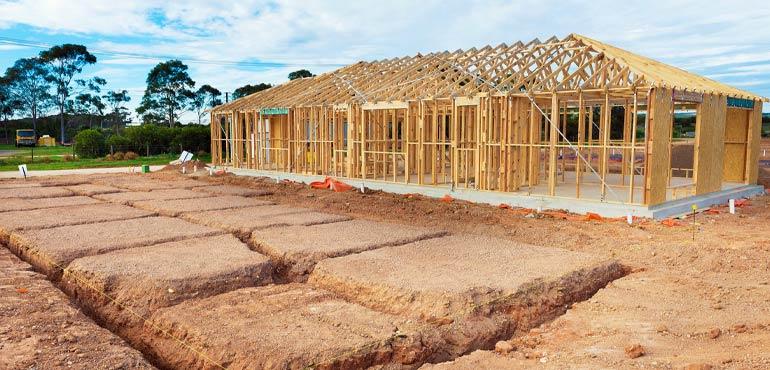
- Home
- Running your business
- Contracts
- Cost plus & construction management contracts
Cost plus and construction management contracts
Cost plus contracts and construction management contracts are contract models which involve added responsibility and risk for both homeowners and contractors. We do not recommend using them.
Cost plus contracts and construction management contracts are two types of contracts which, although more commonly associated with commercial building projects, may legally be used for domestic building work in Queensland.
The QBCC strongly recommends homeowners and contractors obtain formal legal advice before agreeing to use either of these contracts for domestic building work. Both models involve:
- added responsibility and risk for both homeowners and contractors
- reduced protection for homeowners under the Queensland Home Warranty Scheme
- increase risk of a dispute.
Cost plus contracts
A cost plus contract is defined in section 1 of Schedule 1B of the Queensland Building and Construction Commission Act 1991 (QBCC Act) as:
- a domestic building contract under which the amount the building contractor is to receive under the contract cannot be accurately calculated when the contract is entered into, even if prime cost items and provisional sums are ignored.
Typically, under this contract type, the amount the homeowner will have to pay will be the actual costs incurred by the contractor (e.g. the amount a building contractor pays for materials and to their subcontractors) plus a percentage of those costs, or an added fee, to cover the contractor’s overheads and profit. As an example, the contract price may be described as ‘cost plus 20%’.
Cost plus contracts carry heightened risks for homeowners because of the lack of certainty regarding the final cost of the project.
In fact, because the contractor’s payment claims under this type of contract are usually based on their costs plus a percentage of those costs, there is actually a disincentive for the contractor to minimise costs. The greater the cost base, the more money the contractor will receive from their margin.
The high incidence of disputes associated with the use of this contract model is also a risk for both parties.
Reports and complaints to the QBCC over many years suggest that the final costs under a cost plus contract are often considerably more than the homeowners anticipated at the beginning of their building project, sometimes more than double their expectation.
Construction management contracts
There are different versions of the construction management contract model. A common feature of some versions is that the homeowner is required to sign contracts directly with a range of trade contractors (e.g. plumbers, carpenters, etc.). These trade contractors are to be supervised and coordinated by a construction manager (a licensed builder) with whom the homeowner will have a separate contract.
Under this arrangement, the homeowner is likely to have much more responsibility and greater exposure to financial and legal risk than under the usual domestic building arrangement where they have only one contract with a builder as head contractor.
A breakdown in the construction management contract, or one of the trade contracts, may have a flow-on impact on other trade contracts in which the homeowner is involved, potentially leaving the homeowner exposed to delays and costly legal action.
If the construction management contract with the overseeing builder is terminated for any reason, all trade contractors will need to stop work due to lack of supervision until the homeowner appoints a new construction manager. This could delay progress on site for a long time.
These complications are in contrast to the more common and simpler domestic building contract arrangement where the homeowner contracts solely with a builder as head contractor who then contracts with trade contractors and both manages and supervises their work on the homeowner’s behalf. In this case, any problems associated with the subcontracts are the builder’s responsibility, not the homeowner’s.
Warning for owners
It is very important for homeowners to note that, as a consequence of the uncertainty surrounding the final contract price for both of these types of contracts, assistance for non-completion under the Queensland Home Warranty Scheme (QHWS) (i.e. where another contractor is required to complete unfinished work) is generally not available to homeowners when cost plus or construction management contracts are used.
Warning for contractors
Both of these contract formats have potential risks for contractors. The uncertainty about the final price heightens the need for contractors to be diligent in assessing the ongoing financial capacity of their clients.
Depending on the terms of the particular contract, there may be greater risk for the construction manager associated with the use of construction management contracts. The construction manager may be contractually responsible for matters over which they have reduced control compared to a normal domestic building contract.
For example, they may be legally responsible for the performance of the trade contractors even though they do not have a contract directly with them.
Construction managers also need to be aware that even where the homeowner is contracting directly with the construction management trade contractors, as licensed builders they will be responsible for overall supervision of the whole project and retain accountability for any defective work.
In addition, construction managers should note that they are responsible for arranging, collecting and passing the QHWS premium on to the QBCC based on the full value of the total project, not just for the value of their construction management contract.
More information
This information is general in nature. For advice on particular contracts or their individual circumstances, homeowners and contractors should obtain formal legal advice from a practising solicitor before signing the contract.
You can also download our Domestic building contracts—information for owners and contractors (PDF, 918KB). It has useful information on other contract matters and topics related to domestic building and renovating.

